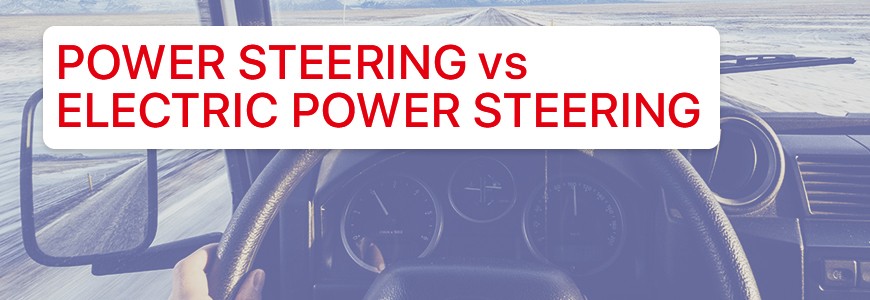
What are the main differences between power steering and electric power steering?
In modern cars the steering wheel is turned with maximum ease. In vehicles that were manufactured before 1950 it was not so, though. Therefore, the drivers had to make some efforts to turn the wheels of the car in a certain direction.
Which vehicle unit makes driving comfortable? In different car models one of two types of assemblies is used: power steering and electric power steering. These are specific mechanisms that have certain technical characteristics but differ in the principle of action.
Power steering operation principle
First, let us consider what power steering is. This is a mechanism which significantly facilitates vehicle control.
Power steering is a closed hydraulic system consisting of several important elements. These include a hydraulic pump of gear or vane (blade) construction, which includes a pressure reducing valve, a hydraulic fluid tank and a steering rack. In addition, a power hydraulic cylinder is used, it transfers force to the steering rack. The hydraulic cylinder can be constructed both in the steering rack body and as a separate assembly transmitting the force to the steering rod, for example, on CitroenSaxo or Peugeot106.

All elements of the mechanism are connected by rubber reinforced high-pressure pipes. They contain a hydraulic fluid, as a rule, usual ATF mineral oil (Automatic Transmission Fluid) is used. When the driver turns the steering wheel in any direction, the certain line opens. Hydraulic fluid creates pressure and helps the piston to move and push the steering rack. Thus, the force required to turn the steering wheel is reduced several times.
Earlier, power steering was installed exclusively on trucks. Later, the this mechanism started to be installed on passenger cars, since the driver did not get tired even with a long trip with the power steering mechanism.
Electric power steering operation principle
What is electric power steering? This is a peculiar system that perfectly copes with the task of reducing the control effort. It consists of a steering shaft, engine, electronic unit and torque sensors on the steering wheel and the speed of its rotation.

The electric power steering operation is quite simple. It consists in the fact that during the rotation of the steering wheel, the torsional shaft is twisted. It acts as a tracking mechanism. This action instantly registers a non-contact sensor. On the basis of the information received, the smart electronic unit makes the necessary calculations. It determines the optimum compensation force and signals the electric motor to turn the steering shaft in the same direction as the driver turns.
Advantages of power steering and electric power steering
Until recently, there was a tendency that motorists preferred the hydraulic power steering when buying a car. Allegedly, a male car should have the power steering system only. In fact, this is a stereotype that has absolutely no basis. The electric power steering system is no worse than the hydraulic one in terms of the quality of its tasks and in some respects (fuel economy, diagnostics, etc.) even surpasses it.
Power steering is a time-tested system. It has significant advantages. This is a reliable mechanism that meets strict quality standards. The hydraulic system is versatile. It is used with equal success on passenger cars, trucks and minibuses.
The electromechanical system also has good characteristics:
- compact size
- ease of use
- ignition only during steering wheel rotation
- simplicity of design
Also, the main advantage of the EPS is its excellent compatibility with the car electronic systems. Given the popularity of electric vehicles, you can safely say that the future is for electric amplifiers.
Disadvantages power steering and electric power steering
Even the most perfect mechanisms have drawbacks. The key disadvantage of the power steering is that the system uses hydraulic fluid. It is necessary to control its level and make a replacement in time. Unfortunately, official representatives do not always share information about the periodicity of oil change in the power steering system, but as our experience shows, oil change in the HPS system should be made at least every 50 thousand km mileage. Moreover, this procedure is very expensive - the total amount of oil in the HPS system is about 1 liter. Another drawback is that the hydraulics operates in a constant mode. This leads to increased fuel consumption.
What can be said about EPS system? The disadvantage of the electromechanical system is obvious: how to check the electric power steering without installing it in the car? This is due to the fact that the system consists of complex elements. To prevent breakdowns, periodic electrical power steering diagnostics is needed. So you can avoid unpleasant situations. Another disadvantage of EPS is a small power of the mechanism. Therefore, it is not used in the production of off-road vehicles and trucks.
There is no definite answer which system is better. Both types of systems are reliable in operation. The driver himself decides what his preference is.



COMMENTS